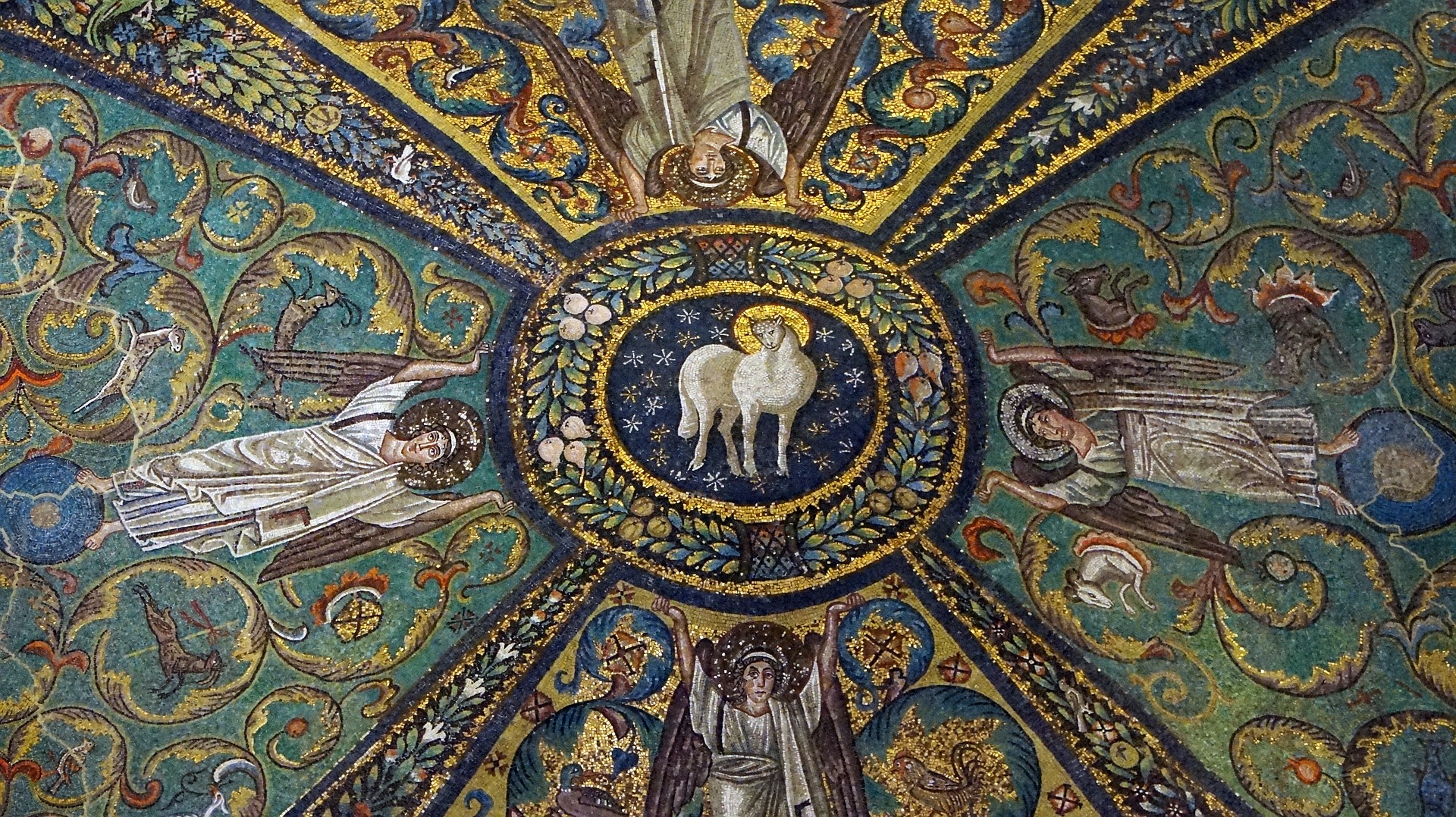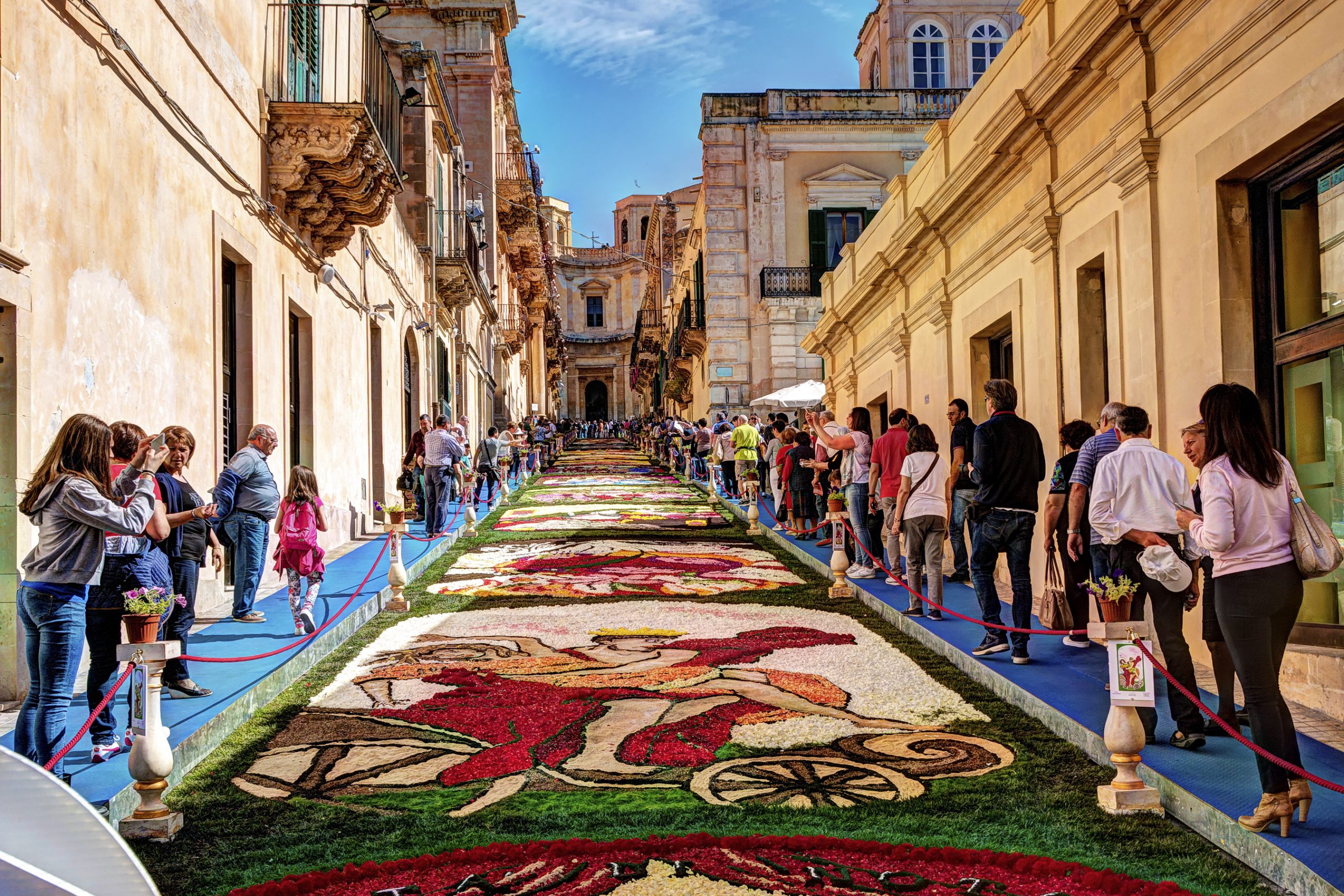This relaxing seaside town has centuries’ worth of fascinating stories to tell about fascinating people.
Galla Placidia
Galla Placidia was a prominent Western empress and regent born to Roman Emperor Theodosius in 392. She married Gothic King Ataulf after the Goths sacked Rome in August 410. When Ataulf died, the Goths returned Galla Placidia to the Romans who insisted she marry Flavius Constantius, the Roman co-emperor along with her brother Honorius.
Constantius died shortly thereafter, and Galla began having bitter arguments with her brother. She fled to Constantinople in 423 with her children after Honorius accused her of aiding his enemies. Honorius soon died, and Galla’s son Theodosius won the throne back for his family. Galla Placidia served as her son’s regent for twelve years.
The Mausoleum of Galla Placidia is named as her final resting place. It has an extraordinary interior filled with rich byzantine mosaics. The artwork depicts themes of the victory of eternal life over death. Light enters underneath the central dome through alabaster window panels.
UNESCO praised the mausoleum as “the earliest and best preserved of all mosaic monuments, and at the same time one of the most artistically perfect.”
Teodora
Born in 500, empress Teodora ruled the Byzantine Empire with her husband Justinian I at her side. Considered one of the most powerful leaders of the time, she gave women the right to own land and to inherit land from their husbands.
During the violent Nika revolt, Teodora rescued the empire from destruction with a determined speech that convinced fellow leaders not to flee. A Byzantine mosaic features her image at the Basilica of San Vitale in Ravenna, built a year after her death.
Dante: Paolo and Francesca
Francesca da Rimini was the daughter of the Lord of Ravenna during Dante’s time. Dante portrayed her in Canto V of the Inferno as one of his most unforgettable characters.
In the tragic love story, Francesca must marry a man whom she did not love so that their families would have an allegiance. One day, she reads a book in a library with his brother, and the book was so romantic that the two were compelled to kiss passionately. Francesca’s fiancé opens the library door only to find her kissing his brother. Out of rage and jealousy, he kills them both.
Lost in the fiery flames of the Inferno, the lovers are sentenced to an eternity of being controlled by the wind. In their human lives, they allowed their bodies to be ruled by their passion, so now they can never again control them.
The author of this tragic love tale lived in Ravenna in the late 1200s after being exiled from Florence. The great poet and father of the Italian language rests in a crypt in a quaint courtyard with bronze sculptures close to Galla Placidia’s Mausoleum.
Lord Byron
This 19th century poet lived in Ravenna between 1819 and 1821 because he fell in love with local aristocrat Teresa Guiccioli. In Ravenna, he wrote his satirical poem “Don Juan” and “Ravenna diary, My dictionary and Recollections”.
Anita Garibaldi
The beloved wife and comrade-in-arms of celebrated General Garibaldi died at Guiccioli Farm House by Ravenna, with Garibaldi and his friends by her side. Her body was buried, but her spirit carried on in her husband’s heart. The revolutionary general grew to be one of Italy’s fathers.
Oscar Wilde wrote in his poem entitled “Ravenna” (1878), “Light thy towers, guarding well//where Dante sleeps, where Byron loved to dwell. //But thou, Ravenna, better loved than all, thy ruined palaces are but a pall//that hides thy fallen greatness.”
Ravenna’s greatness is certainly one for the books.































